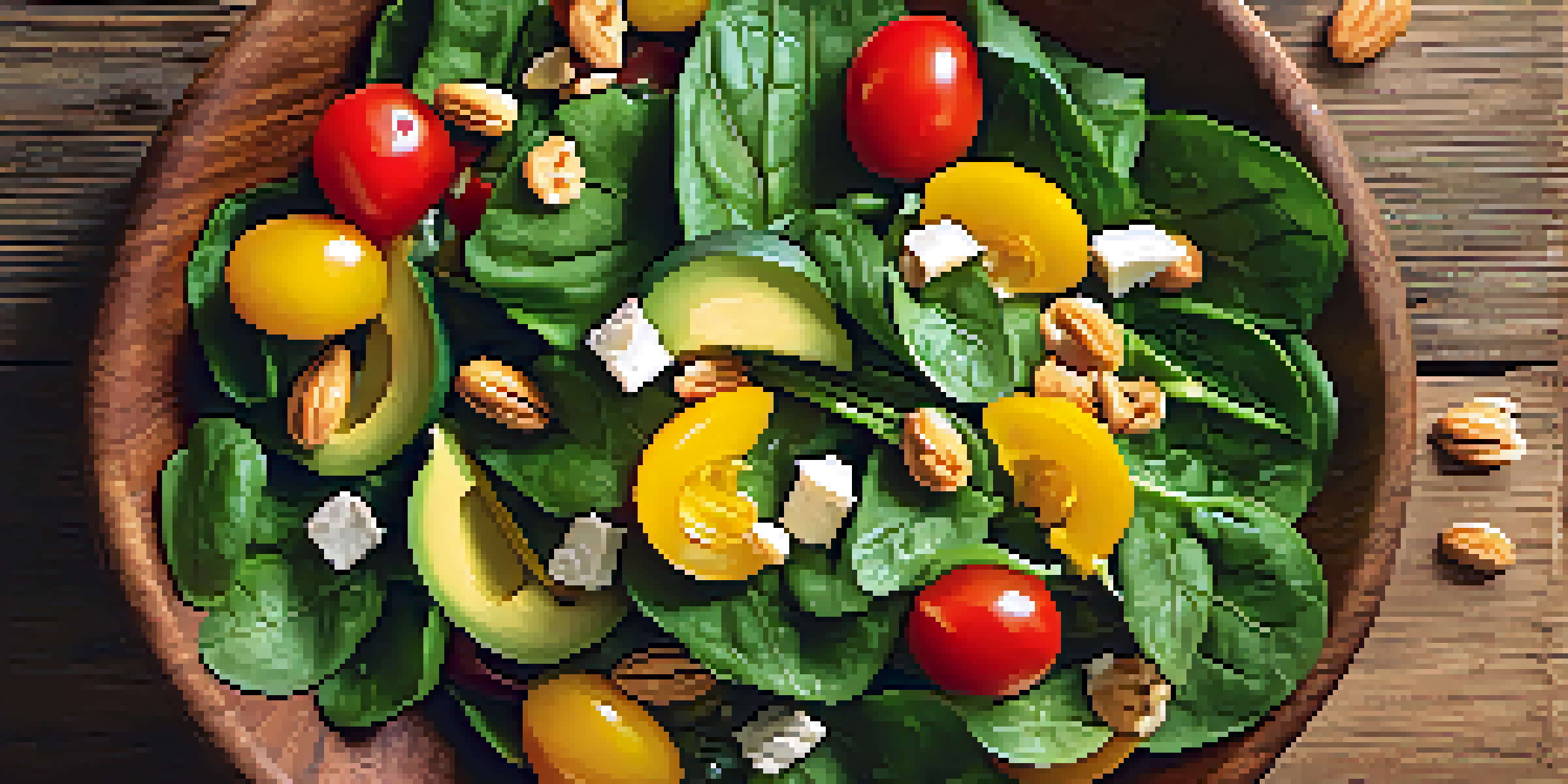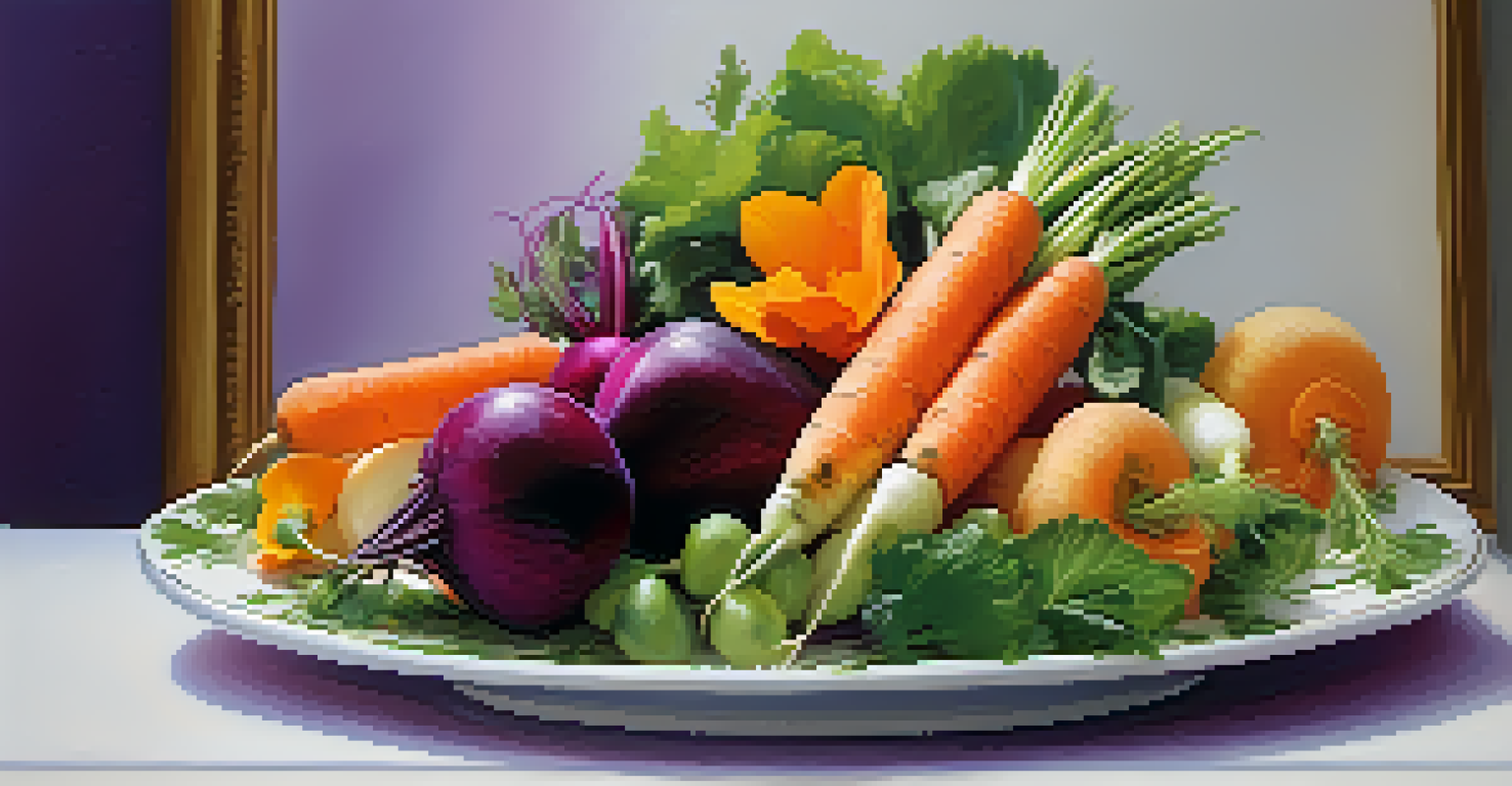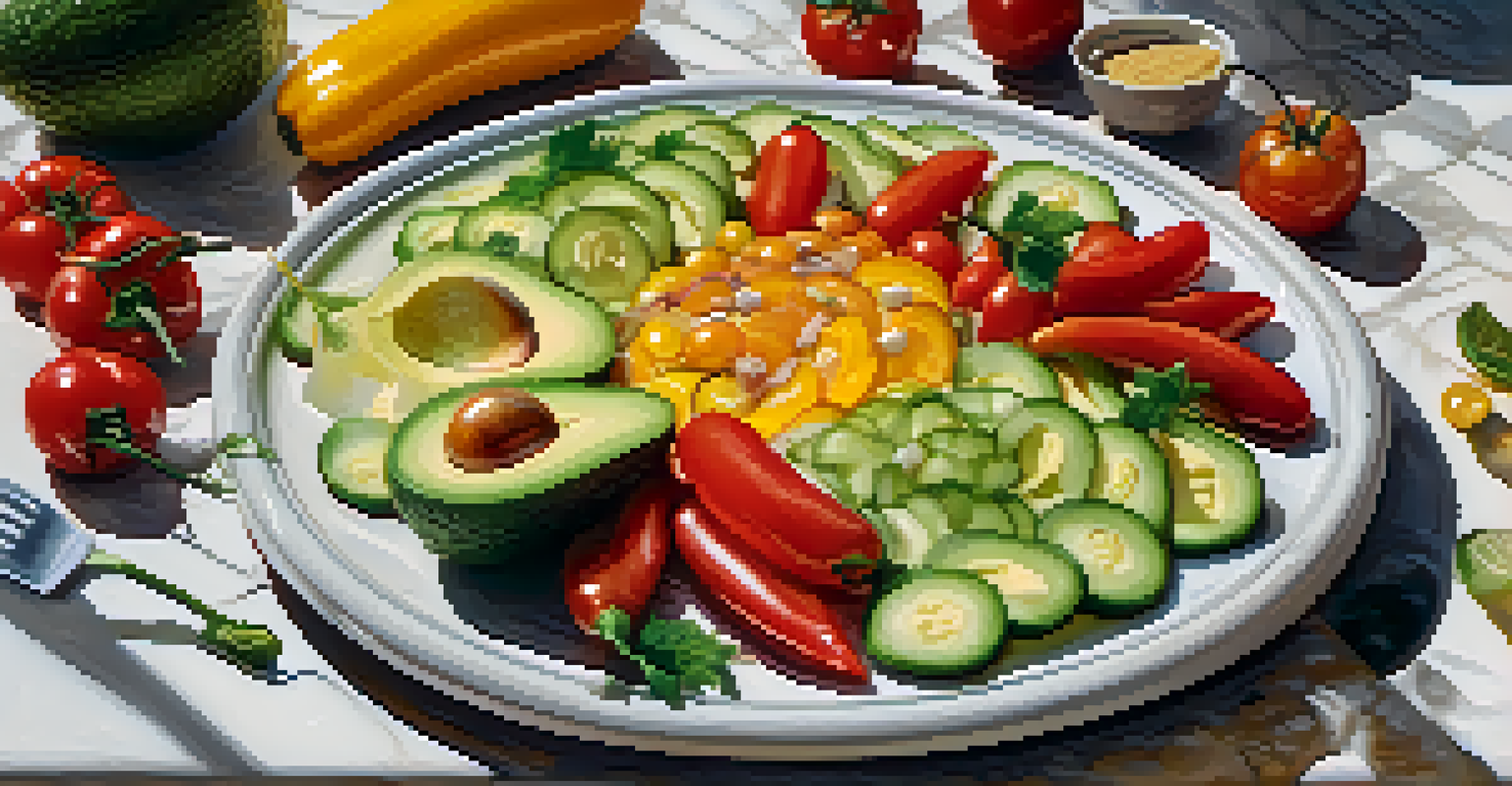Color Harmony: Using Nature's Palette in Raw Food Dishes

Understanding Color Harmony in Food Presentation
Color harmony is about creating a visually appealing blend of colors that work well together. In the context of food, this means using ingredients that not only taste great but also look stunning on the plate. Just as artists select colors to evoke emotions, chefs can use color to enhance the experience of their dishes.
Food is not just what you eat; it’s how it looks, smells, and feels. Presentation is everything.
Imagine a vibrant salad filled with deep greens, bright reds, and sunny yellows. Each color not only adds to the visual appeal but also indicates a variety of nutrients. By understanding the basics of color harmony, you can transform everyday raw food dishes into culinary masterpieces.
Incorporating various colors into your meals can even elevate your mood, making you more excited to eat healthily. So, next time you prepare a meal, think about how the colors on your plate can create a more enjoyable dining experience.
The Role of Nature's Palette in Raw Foods
Nature provides an incredible array of colors that can enhance the appeal of raw foods. From leafy greens to vibrant fruits, each hue represents unique health benefits. For example, orange carrots are packed with beta-carotene, which is great for your eyes, while dark leafy greens are rich in iron and calcium.

When you incorporate a range of colors from fruits and vegetables into your meals, you're not just making them visually stunning; you're also ensuring a diverse intake of nutrients. This variety helps maintain a balanced diet and supports overall well-being.
Color Enhances Food Presentation
Using a variety of colors in food not only makes dishes visually appealing but also indicates a range of nutrients.
As you explore nature's palette, consider not just the taste but also how each color can contribute to your health. This mindful approach can make cooking and eating raw foods a more enriching experience.
Combining Textures for Visual Appeal
While color is vital, texture is equally important in creating visually appealing dishes. A raw food dish that combines crunchy, creamy, and juicy elements can intrigue the senses. Think of a salad that mixes crisp lettuce, creamy avocado, and juicy tomatoes for a delightful experience.
Color is the keyboard, the eyes are the harmonies, the soul is the piano with many strings.
Textures can enhance the visual story of your dish, adding to the overall enjoyment. For instance, a bowl filled with colorful fruits can be complemented by the crunch of nuts or seeds sprinkled on top. This not only adds flavor but also an appealing contrast.
By balancing colors and textures, you can create a feast for both the eyes and the palate. This approach encourages people to engage with their food, making healthy eating feel more indulgent and exciting.
The Science Behind Color and Appetite
Did you know that the colors of your food can influence your appetite? Studies have shown that certain colors can stimulate or suppress hunger. For example, red and yellow are often associated with increased appetite, making them popular choices in restaurant decor.
In raw food dishes, utilizing colors that are visually stimulating can help encourage healthy eating habits. A colorful plate can make you more inclined to enjoy your meal and try new ingredients that you might otherwise overlook.
Textures Add Visual Interest
Combining different textures in meals creates a delightful sensory experience that enhances enjoyment.
Understanding the psychology of color can be a powerful tool in meal preparation. By presenting your raw food dishes in a way that captivates the eye, you can create an inviting atmosphere that promotes healthy eating.
Incorporating Seasonal Colors into Your Meals
One of the joys of cooking with raw foods is the ability to embrace seasonal ingredients. Each season brings its own vibrant colors that can inspire your dishes. For instance, spring offers fresh greens and bright radishes, while autumn showcases rich oranges and deep purples.
By aligning your meals with the seasons, you not only celebrate nature's bounty but also ensure the freshest, most flavorful ingredients. This connection to the seasons can also evoke nostalgia and a sense of comfort in your cooking.
Plus, seasonal eating often means better nutritional value, as foods are harvested at their peak. So, take the opportunity to explore local markets and bring the colors of the season into your raw food dishes.
Using Color Themes for Special Occasions
If you're hosting a gathering or a special occasion, consider using a color theme for your raw food dishes. This can create a cohesive look that ties your meal together beautifully. For example, a summer picnic could feature a rainbow of colorful fruits and vegetables, creating a joyful atmosphere.
Color themes can also reflect the mood of the event. For a romantic dinner, you might opt for softer hues like pinks and whites, using ingredients like strawberries and cauliflower. This attention to detail can elevate the dining experience for your guests.
Seasonal Colors Elevate Meals
Incorporating seasonal ingredients brings fresh colors and flavors to your dishes, celebrating nature's bounty.
Remember, the way you present food can enhance the overall experience, making it more memorable. Utilizing color themes can transform an ordinary meal into a festive celebration.
Experimenting with Edible Flowers for Color
Edible flowers are a fantastic way to add an artistic touch to your raw food dishes. Not only do they provide a pop of color, but many also offer unique flavors that can enhance your meals. Think of vibrant nasturtiums or delicate pansies, which can make a salad look like a work of art.
Incorporating flowers into your dishes can also spark curiosity and encourage people to try new flavors. Many edible flowers are packed with nutrients and can add a surprising twist to familiar recipes.

When experimenting with edible flowers, ensure they are safe for consumption. This exploration can lead to delightful discoveries in both flavor and presentation, making your raw food creations even more special.